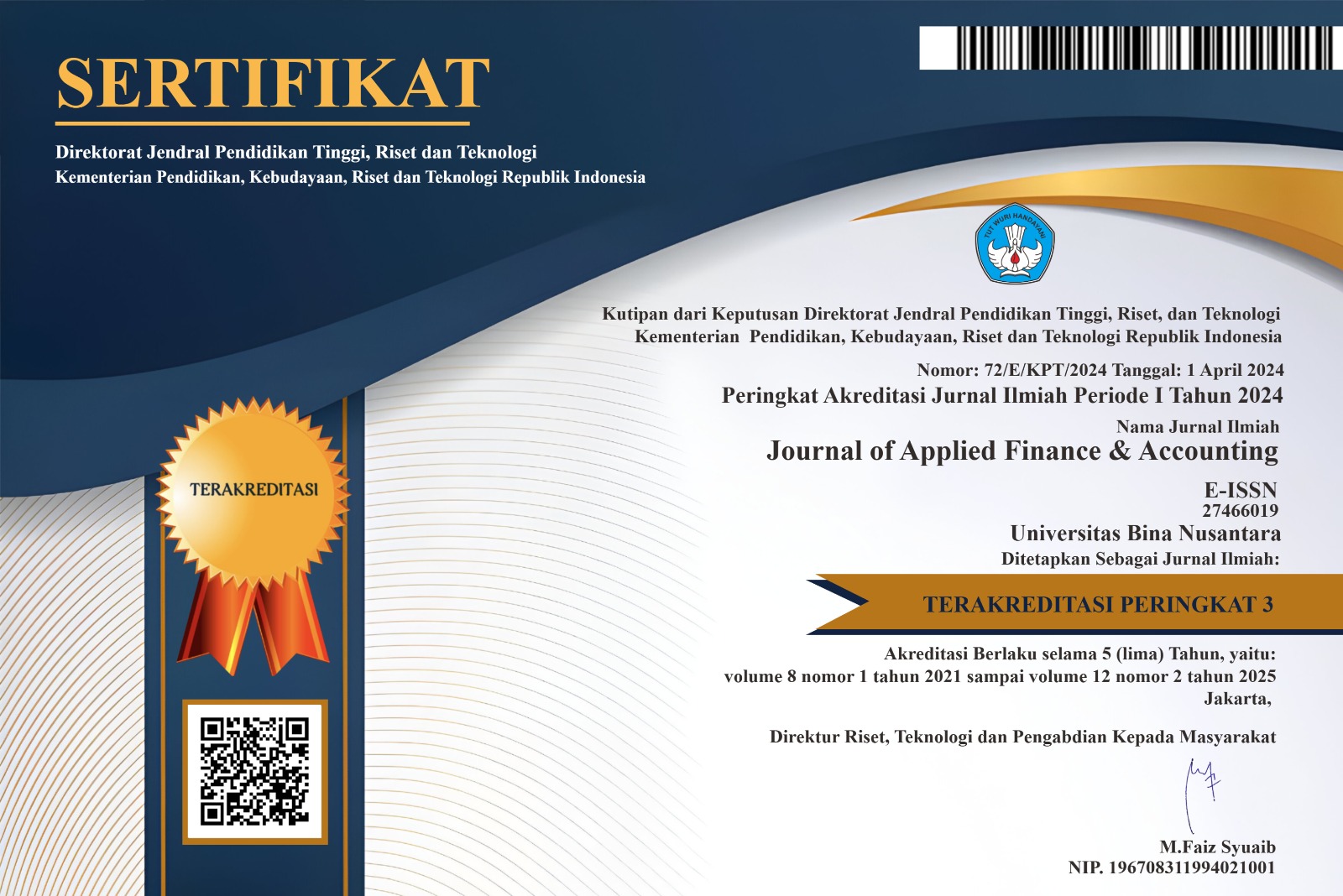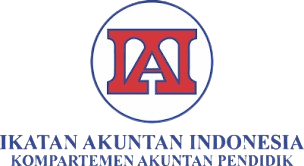Correlation Analysis between Jakarta Composite Index and LQ45 Index With Net Asset Value of Equity Mutual Fund and Balanced Mutual Fund
DOI:
https://doi.org/10.21512/jafa.v1i2.126Keywords:
Equity mutual fund, balanced mutual fund, risk and return, sharpe ratio, correlation, vector auto regression.Abstract
Subprime mortgage is one factor causes world economic in crisis. The impact has stroke the stock exchange world wide, included Indonesia Stock Exchange (BEI).The investors who are investing in the instrument of Stocks and Mutual Fund are having consequences of global financial crisis and index prices drops. In Indonesia, Mutual Fund is guaranteed by the BAPEPAM with the Act of Capital Market no.8, 1995 (Undang-Undang Pasar Modal). The main purposes of the research is to analyze JCI and LQ 45 index with Equity Mutual Fund and Balanced Mutual Fund in terms of risk and return, sharpe ratio, correlation and whether the JCI and LQ 45 are linked together over time with Vector Autoregression (VAR). Types of research methodology are using secondary research method and analysis method. In return, Equity Mutual Fund has a higher return than Balanced Mutual Fund because the portfolio diversification consists of money market and equity, but in Balanced Mutual Fund there is also bond as portfolio. In risk, Equity Mutual Fund is more risky than Balanced Mutual Fund as compensation with higher return. Sharpe ratio is used to measure the performance of mutual fund. The higher the Sharpe ratio, the better the fund's historical risk-adjusted performance. In VAR, both Equity Mutual Fund and Balanced Mutual Fund will affect by both JCI and LQ 45 Index.
Downloads
Published
Issue
Section
License
Authors who publish with this journal agree to the following terms:
Authors retain copyright and grant the journal right of first publication with the work simultaneously licensed under a Creative Commons Attribution License that allows others to share the work with an acknowledgement of the work's authorship and initial publication in this journal.
Authors are able to enter into separate, additional contractual arrangements for the non-exclusive distribution of the journal's published version of the work (e.g., post it to an institutional repository or publish it in a book), with an acknowledgement of its initial publication in this journal.
Authors are permitted and encouraged to post their work online (e.g., in institutional repositories or on their website) prior to and during the submission process, as it can lead to productive exchanges, as well as earlier and greater citation of published work (See The Effect of Open Access).




